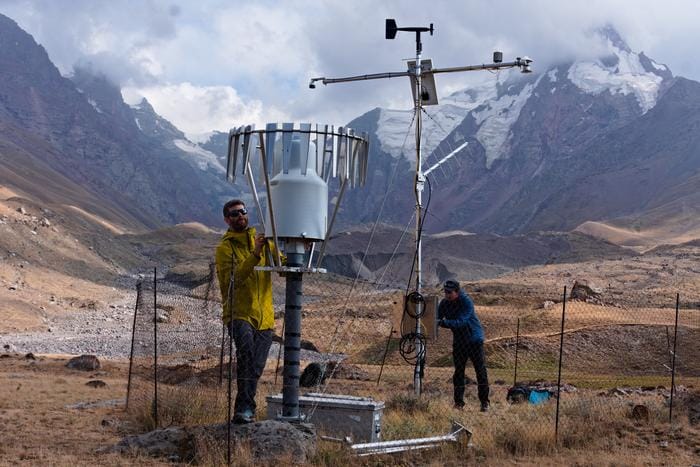Scientists have long been puzzled by the sturdy glaciers of the mountains of central Asia, which have inexplicably remained intact even as other glaciers around the world rapidly recede due to human-driven climate change. This mysterious resilience may be coming to an end, however.
The glaciers in this mountainous region—nicknamed the “Third Pole” because it boasts more ice than any place outside of the Arctic and Antarctic polar caps— have passed a tipping point that could set them on a path to accelerated mass loss, according to a new study. The end of this unusual glacial resilience, known as the Pamir-Karakoram Anomaly, would have major implications for the people who rely on the glaciers for water.
Scientists suggested that a recent decline in snowfall to the region is behind the shift, but it will take much more research to untangle the complicated dynamics of these remote and under-studied glaciers, according to a study published on Tuesday in Communications Earth & Environment.
“We have known about this anomaly since the early 2000s,” said study co-author Francesca Pellicciotti, a professor at the Institute of Science and Technology Austria (ISTA), in a call with 404 Media. “In the last 25 years, remote-sensing has really revolutionized Earth sciences in general, and also cryospheric sciences.”
“There is no definite answer yet for why those glaciers were quite stable,” said Achille Jouberton, a PhD student at ISTA who led the study, in the same call. “On average, at the regional scale, they were doing quite well in the last decade—until recently, which is what our study is showing.”
This space-down view of the world’s glaciers initially revealed the resilience of ice and snowpack in the Pamir-Karakoram region, but that picture started to change around 2018. Many of these glaciers have remained inaccessible to scientists due to political instabilities and other factors, leaving a multi-decade gap in the research about their curious strength.
To get a closer look, Jouberton and his colleagues established a site for monitoring snowfall, precipitation, and water resources at Kyzylsu Glacier in central Tajikistan in 2021. In addition to this fieldwork, the team developed sophisticated models to reconstruct changes within this catchment since 1999.
While the glaciers still look robust from the outside, the results revealed that snowfall has decreased and ice melt has increased. These interlinked trends have become more pronounced over the past seven years and were corroborated by conversations with locals. The decline in precipitation has made the glacier vulnerable to summer melting, as there is less snowpack to protect it from the heat.
“It will take a while before these glaciers start looking wasted, like the glaciers of the Alps, or North America, or South America,” said Pellicciotti.
While the team pinpointed a lack of snowfall as a key driver of the shift, it’s unclear why the region is experiencing reduced precipitation. The researchers are also unsure if a permanent threshold has been crossed, or if these changes could be chalked up to natural variation. They hope that the study, which is the first to warn of this possible tipping point, will inspire climate scientists, atmospheric scientists, and other interdisciplinary researchers to weigh in on future work.
“We don't know if this is just an inflection in the natural cycle, or if it's really the beginning of a trend that will go on for many years,” said Pellicciotti. “So we need to expand these findings, and extend them to a much longer period in the past and in the future.”
Resolving these uncertainties will be critical for communities in this region that rely on healthy snowpack and ice cover for their water supply. It also hints that even the last stalwart glacial holdouts on Earth are vulnerable to climate change.
“The major rivers are fed by snow and glacier melts, which are the dominant source of water in the summer months, which makes the glaciers very important,” concluded Jouberton. "There’s a large amount of people living downstream in all of the Central Asian countries that are really direct beneficiaries of those water and meltwater from the glaciers.”

